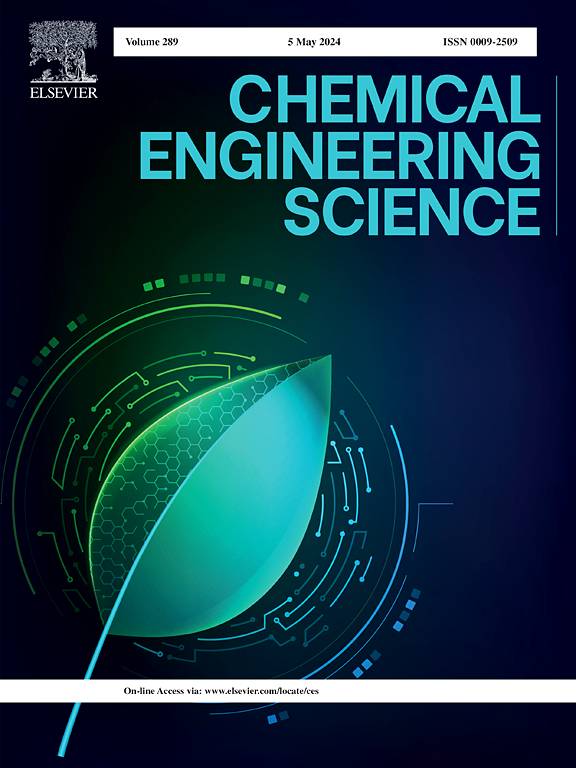心形微通道中粘性气泡的破裂动力学:机制和预测模型
IF 4.3
2区 工程技术
Q2 ENGINEERING, CHEMICAL
引用次数: 0
摘要
为了提高心形微通道内高粘度流体的气液传质效率,本研究系统地研究了不同粘度甘油溶液下心形微通道弧形连接处的气泡破碎动力学。高速摄像机观察到,弧型交界处的气泡破裂可分为三种情况:阻塞破裂、隧道破裂和挤压破裂。气泡破碎的发生与气泡等效长度(10 /w0)和毛细数(Ca)有关,通过数据分析得出了不同液相粘度下气泡破碎模式的转变规律。此外,还考察了气泡等效长度、总毛细数、液相粘度(μL)和后泡速度(Ug)对气泡挤压破碎的影响。数据分析表明,Ug对幂律指数α和β的影响显著,α和β分别提高23.8 %和43.9 %。此外,本研究首次提出了预测气泡挤压破碎是否发生的三维表面模型10 /w0 = a(Ug/Uin)bCac,为控制高粘度体系中的气泡破碎提供了强有力的理论框架。该研究加深了对高粘度体系气泡破碎动力学的认识,为心形微通道结构优化提供了理论基础。本文章由计算机程序翻译,如有差异,请以英文原文为准。
Breakup dynamics of viscous bubbles in heart-shaped microchannel: Mechanisms and predictive models
To enhance the gas–liquid mass transfer efficiency in high-viscosity fluids within heart-shaped microchannels, this study systematically investigated the bubble breakup dynamics at the arc-shaped junction of heart-shaped microchannel under different viscosities of glycerol solution. High-speed camera observed that bubble breakup at the arc-shaped junction could be divided into three cases: breakup with obstruction, breakup with tunnel, and squeezing breakup. The occurrence of bubble breakup is related to the bubble equivalent length (l0/w0) and the capillary number (Ca), and the bubble breakup pattern transition rule under different liquid phase viscosities was obtained through data analysis. Furthermore, the effects of the bubble equivalent length, total capillary number, liquid phase viscosity (μL), and velocity of the rear-bubble (Ug) on bubble squeezing breakup were investigated. The data analysis showed that Ug significantly affected the power-law indices α and β, increasing α by 23.8 % and β by 43.9 %, respectively. In addition, this study proposed a three-dimensional surface model l0/w0 = a(Ug/Uin)bCac for the first time to predict whether bubble squeezing breakup occurs, offering a robust theoretical framework for controlling bubble breakup in high-viscosity systems. This study deepens the understanding of bubble breakup dynamics in high-viscosity systems and provides a theoretical foundation for structural optimization of heart-shaped microchannels.
求助全文
通过发布文献求助,成功后即可免费获取论文全文。
去求助
来源期刊

Chemical Engineering Science
工程技术-工程:化工
CiteScore
7.50
自引率
8.50%
发文量
1025
审稿时长
50 days
期刊介绍:
Chemical engineering enables the transformation of natural resources and energy into useful products for society. It draws on and applies natural sciences, mathematics and economics, and has developed fundamental engineering science that underpins the discipline.
Chemical Engineering Science (CES) has been publishing papers on the fundamentals of chemical engineering since 1951. CES is the platform where the most significant advances in the discipline have ever since been published. Chemical Engineering Science has accompanied and sustained chemical engineering through its development into the vibrant and broad scientific discipline it is today.
 求助内容:
求助内容: 应助结果提醒方式:
应助结果提醒方式:


